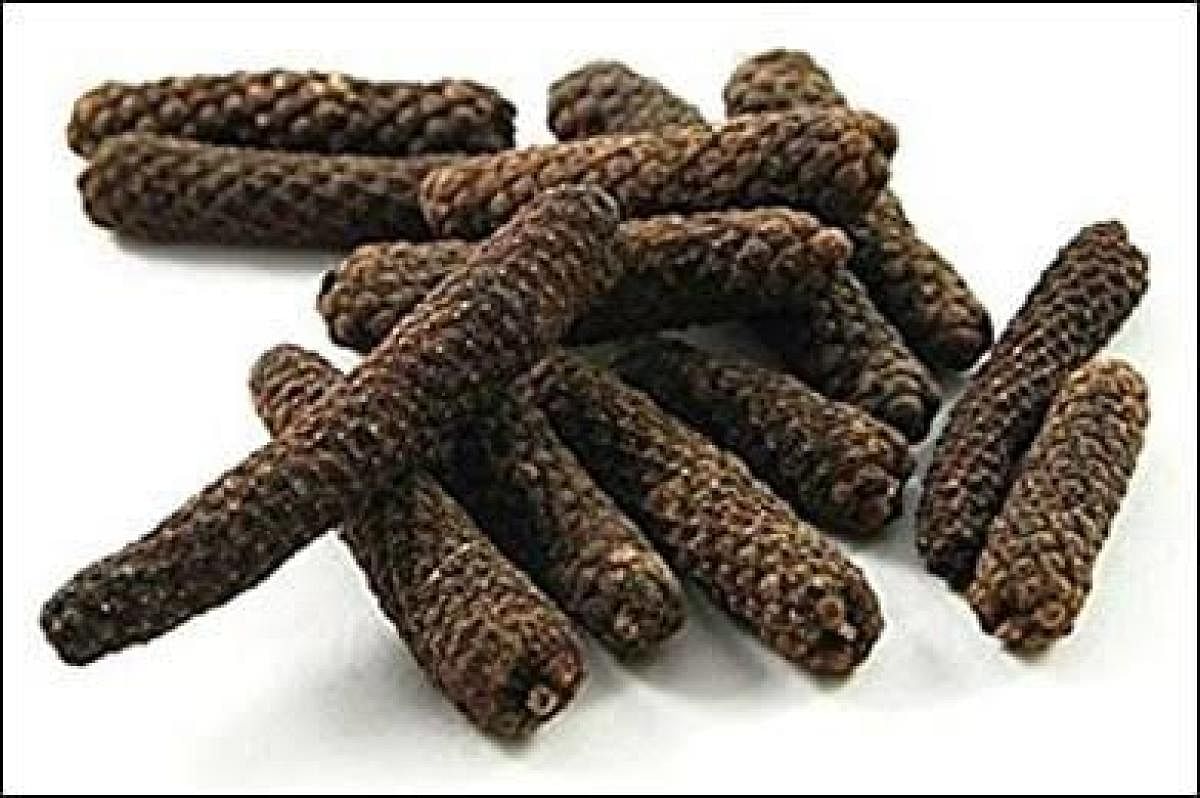
The word pepper has its etymological roots in the Sanskrit word Pippali. Given that black pepper is the most traded spice in the world today, it is sad that the spice that originally lent its name to pepper is slowly disappearing from kitchens across India.
The long pepper species is indigenous to several parts of India, Malaysia, Indonesia, Singapore, and Sri Lanka. The history of Piper longum, the Indian variety, is ancient. Mentioned as far as at least the Atharva Veda, the long pepper is recorded in Ayurvedic texts such as Charak Samhita and Sushruta Samhita as a cure for a range of ailments arising from respiratory issues, gastrointestinal problems, muscle pains, inflammations and even snake poison.
Being amongst the earliest spices traded between eastern and western civilisations, the long pepper was a valuable commodity even in ancient Greek and Rome. Its popularity continued all the way until the era of Europe’s Renaissance movement and the Age of Discovery. Sadly, with the advent of the easily cultivable red chilli peppers from the Americas and the increasing affordability of the regular black pepper, the demand for long pepper fell drastically, eventually disappearing from Europe’s mainstream culinary usage.
So after all this time, is there a place for it in the modern Indian kitchen? In comparison to its popular cousin, the black pepper, the flavour of the long pepper is more complex. While it still features a considerable bite, the long pepper is earthier and more aromatic compared to its sibling, featuring a sweeter taste that follows the initial numbing bite.
The pepper, in its current limited usage, contributes wonderfully to preserves, achars and homemade curry powders in several Indian cuisines. Although the long pepper has lost a lot of ground to black pepper and chilli varieties, its strength lies in its versatile flavour profile that can lend itself to countless regional specialities such as dry vegetable preparations, gravies, meat curries, dals, rasams and even desserts.
The popularity of Pippali was at its peak before the advent of chillies in India. Expecting the average Indian household to dig up recipes from the past in an attempt to revive the spice is a far-fetched plan and one that even professional cooks would not pursue too eagerly. Thankfully, the resurgence in home cooking by a more adventurous generation can prove to be a blessing in disguise. The long pepper has had a long history of being used in European, Asian and several African cuisines. Its adaptable nature and ability to amalgamate with nuances of several cuisines makes it a perfect contender for the modern Indian spice box.
For the modern Indian home-cook who is as comfortable in making a quorma (long peppers make wonderful ingredients in freshly ground garam masala) as they are in making a berry panna-cotta (simmer the compote of berries with the long pepper and vanilla for that extra oomph), the humble Pippali serves as a perfect mascot. Add this to your shopping list the next time you visit the bazaar.
(The author is a chef and co-founder of a delivery-only kitchen specialising in Gourmet Asian cuisine based out of Mumbai. He enjoys making comforting sandwiches and serious ramen.)